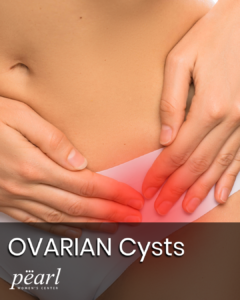 At some point during your life, you may develop an ovarian cyst. Ovarian cysts are fluid-filled sacs or growths that can form on or within the ovaries. They are most common during childbearing years but can occur at any age. Most ovarian cysts are harmless and will disappear on their own. Others, however, can produce serious symptoms or complications. Rarely ovarian cysts can be cancerous. The best way to avoid serious problems resulting from ovarian cysts is to visit Pearl Women’s Center in Portland for regular pelvic examinations.
At some point during your life, you may develop an ovarian cyst. Ovarian cysts are fluid-filled sacs or growths that can form on or within the ovaries. They are most common during childbearing years but can occur at any age. Most ovarian cysts are harmless and will disappear on their own. Others, however, can produce serious symptoms or complications. Rarely ovarian cysts can be cancerous. The best way to avoid serious problems resulting from ovarian cysts is to visit Pearl Women’s Center in Portland for regular pelvic examinations.
To find out more about ovarian cysts, choose the specialists at Pearl Women’s Center. Ask a question, book online, or call our office in Portland at (503) 771-1883. We serve patients from Oregon, Washington, Idaho, Northern California, and Alaska.
Seek immediate attention if you have these symptoms:
While ovarian cysts can naturally resolve themselves, many types must be surgically removed. Our practitioners frequently diagnose the following types of ovarian cysts:
Many ovarian cysts have no symptoms and are detected only during a pelvic exam or with imaging studies like ultrasound. While most cysts are benign, some cysts, particularly those that develop after menopause, may be cancerous. Pearl Women’s Center urges you to protect your health and schedule regular annual pelvic exams.
Symptoms of ovarian cysts include:
;
Our practitioners are experts in the diagnosis, treatment and, if necessary, surgical removal of ovarian cysts. If an ovarian cyst is either found during a pelvic examination or suspected, we will conduct further tests to identify the type, size, shape and composition of the cyst, which may include:
Treatment plans for ovarian cysts are highly individualized based on each patient’s unique circumstance and the type of cyst. They may include: